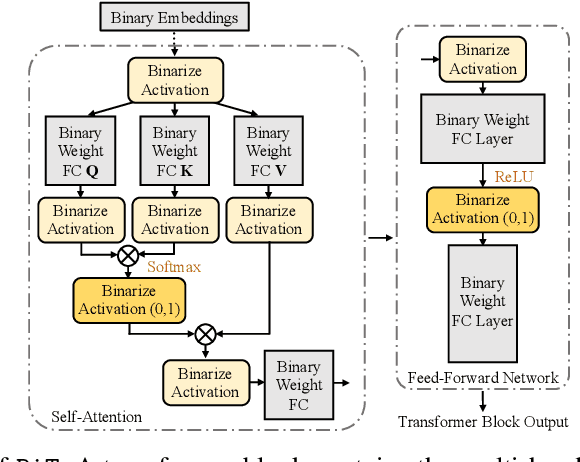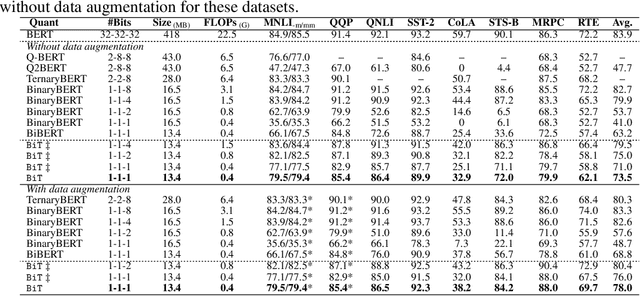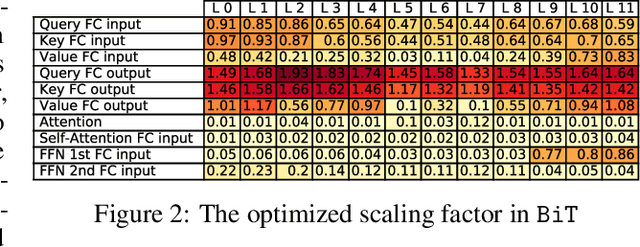BiT: Robustly Binarized Multi-distilled Transformer
Paper and Code
May 25, 2022



Modern pre-trained transformers have rapidly advanced the state-of-the-art in machine learning, but have also grown in parameters and computational complexity, making them increasingly difficult to deploy in resource-constrained environments. Binarization of the weights and activations of the network can significantly alleviate these issues, however is technically challenging from an optimization perspective. In this work, we identify a series of improvements which enables binary transformers at a much higher accuracy than what was possible previously. These include a two-set binarization scheme, a novel elastic binary activation function with learned parameters, and a method to quantize a network to its limit by successively distilling higher precision models into lower precision students. These approaches allow for the first time, fully binarized transformer models that are at a practical level of accuracy, approaching a full-precision BERT baseline on the GLUE language understanding benchmark within as little as 5.9%.
 Add to Chrome
Add to Chrome Add to Firefox
Add to Firefox Add to Edge
Add to Edge